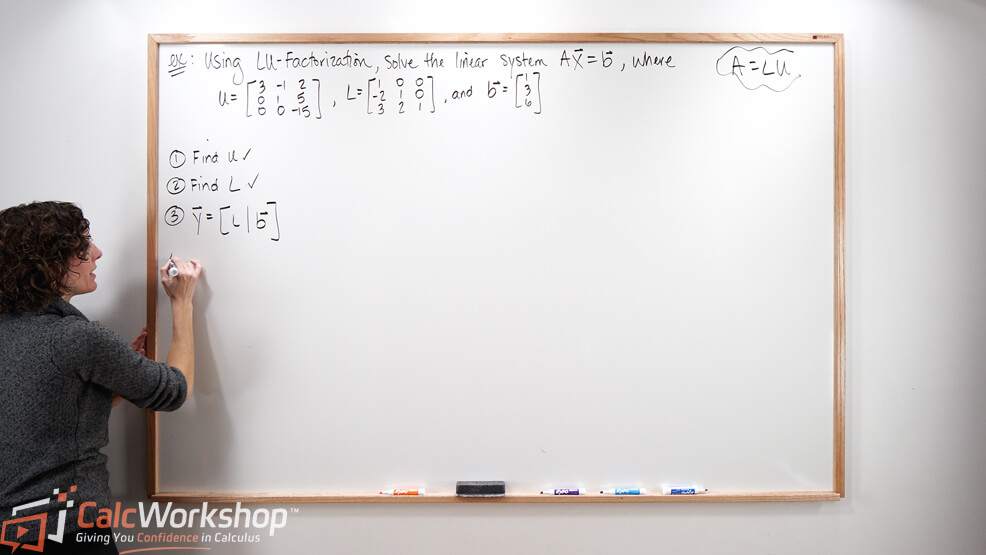Did you know that you can factor a matrix?

Jenn, Founder Calcworkshop®, 15+ Years Experience (Licensed & Certified Teacher)
Just like in algebra, we learned how to express a polynomial in terms of a product of two or more factors. We can similarly define a matrix as a product of two matrices.
Defining Matrix Factorization
Matrix Factorization, or matrix decomposition, is the process of taking a matrix and decomposing it into a product of two triangular matrices.
Explaining Triangular Matrices
Now a triangular matrix is a special kind of square
Understanding LU Decomposition
And LU Decomposition is a factorization of a nonsingular square matrix A (i.e., A is invertible) such that
Applications of Matrix Factorization
But why do we care? What’s the point of factoring a matrix?
This procedure is motivated by the fairly common industrial and business problem of solving a sequence of equations, all with the same coefficient matrix, as well as in engineering applications, partial differential equations for various force functions, and is even considered a better way to implement Gauss elimination (REF).
Step by Step LU Decomposition
Alright, now it’s time to see how LU decomposition works. To fully understand these steps, sometimes called the matrix factorization algorithm, it is best illustrated through an example.
Find the LU factorization of the matrix
First, we will find the Upper Matrix (U) using row operations. But there’s a bit of a twist… we do not care about getting ”
Next, we will use our row operation command lines from our U-matrix and our always important Identity matrix to find our lower triangular matrix
Our first command was
Our second command was
Our third command was
After completing each elementary matrix, we can say
Therefore,
And we can verify our decomposition by checking
Not bad, right?
I should point out that there are actually two methods for finding LU factorization, and we will compare and contrast their similarities and differences in our video lesson.
LU Factorization in Solving Linear Systems
Okay, so while it’s great to know that we can decompose a matrix into a product of two triangular matrices, LU factorization is most useful when solving systems of linear equations.
Consider the matrix equation
Solving Systems of Linear Equations using LU Factorization
Consequently, if we solve for
Example of LU Factorization in a Linear System
Alright, let’s see this in action to help us make sense of this process.
We’ll use LU factorization to solve the linear system in the following format:
First, we will find our upper triangular matrix (U) and lower triangular matrix (L) using the steps seen above.
Next, we solve the system
By using forward substitution, we can solve for the missing y-variables
Thus,
Now, it’s time to find the original system, so we solve
This time we will use backward substitution to solve of
Next Steps
In this video lesson, you will:
- Learn the two methods for LU factorization
- Use matrix decomposition to solve matrix equations
Get ready for a fun learning experience!
Video Tutorial w/ Full Lesson & Detailed Examples

Get access to all the courses and over 450 HD videos with your subscription
Monthly and Yearly Plans Available
Still wondering if CalcWorkshop is right for you?
Take a Tour and find out how a membership can take the struggle out of learning math.